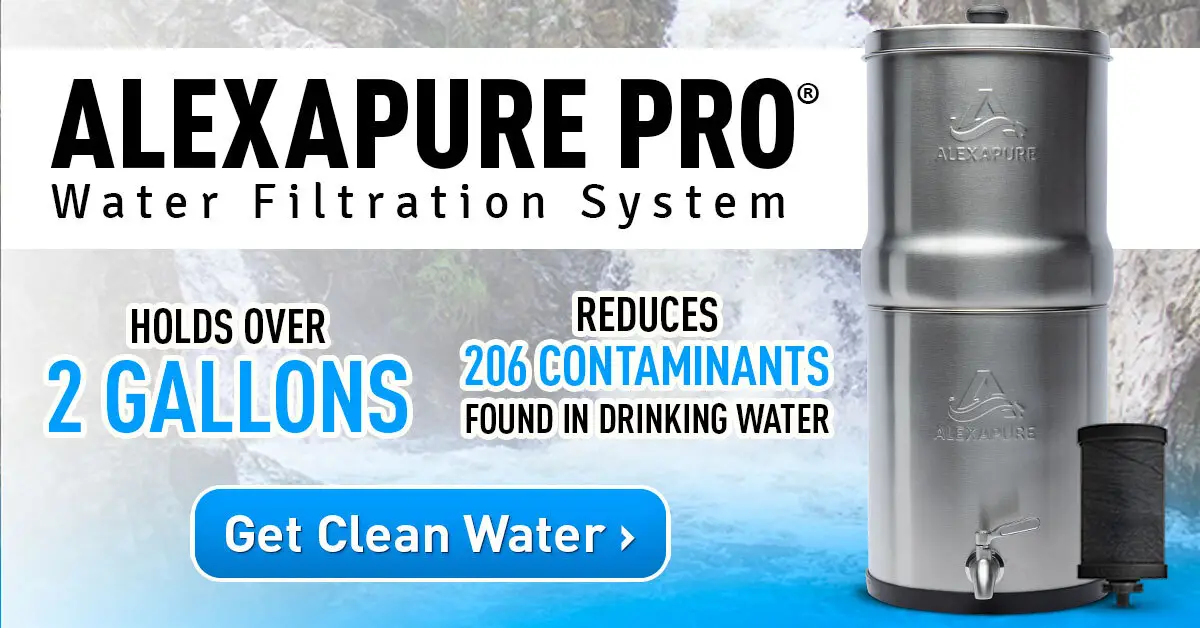Water Filter For Radiation – Radioactive Particles
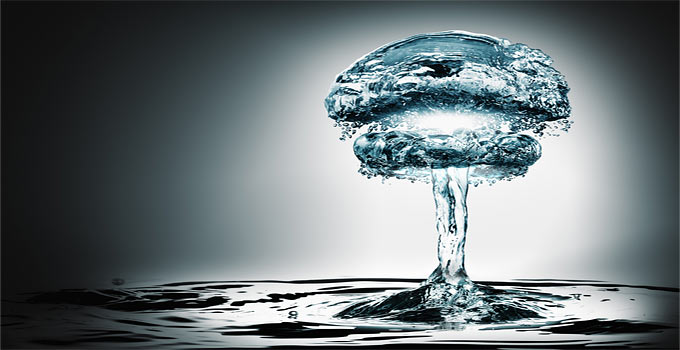
Here’s an unpleasant thought… The potential need for a radiation water filter. To filter out radiation. More specifically, radioactive particles.
A nuclear detonation. A nuclear exchange. Nuclear war. It’ll never happen, right?
Guest article by Bogan
Spurred by a comment on this blog. I started to research how a person might go about filtering water that has been contaminated by radioactivity. Radiation.
Knowing little to nothing about the topic, a person ought to be able to find out something by rummaging through the internet, right?
As I began my search, I noted that more than one seemingly well credentialed commentator suggests that it is impossible to remove all radioactive contaminants from water. This is apparently because they comprise atomic size particles (which by implication can pass through filters).
But to do nothing seems like folly to me.
Natural Earth Water Filter for Radiation
That said, earthen filters for radioactive water is a topic that has already been addressed in Modern Survival Blog:
[ Read: Earthen Water Filter For Radioactive Water ]
Another resource is the following book:
Nuclear War Survival Skills: Lifesaving Nuclear Facts and Self-Help Instructions
(amzn)
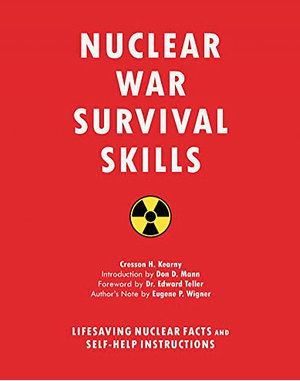
The approach is to use the filtration qualities of naturally occurring substances like dirt, clay, and rocks. All very sound.
The problem is, you probably wont’ have all the right materials stockpiled in quantity in advance. During the period immediately following a nuclear event (however caused), what if you can’t go outside to prospect for, and mine, the right type of clay? Or to dig the right kind of hole in the ground to access to suitably filtered water?
Modern Technology Water Filtration For Radiation
There have been updates to water filtration technology over the years. One wonders if there are technology solutions for the problem of radioactive water that do not require extensive education or experience in the soils field.
One recent MSB commentator suggested a 3-4 stage water distillation setup.
Water Distiller

[Ken adds:
Heavy metals such as Cesium-137 have a very high boiling point temperature 1,240°F for Cesium). Therefore a thermo Water Distiller will leave these heavy metals behind in the source pot.
The distiller boils water into steam (212°F). This results in “pure” water transferred cleanly to the receiving container. I have one of these. They are fairly expensive. Uses lots of electricity to operate (typically takes about 6 hours of boiling to steam out one gallon). But it works. Distilled water is also important for lead acid batteries and other things…
Seychelle Radiological Water Filter
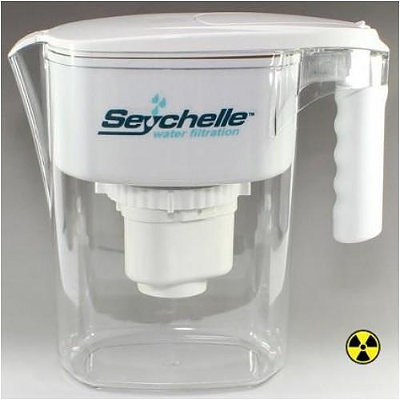
Other options for filtering radioactive water include Seychelle products-specific Radiological Water Filters.
The Seychelle Family Water Pitcher RADIOLOGICAL is a 1 gallon filter pitcher. It’s designed to reduce chlorine taste and odor, along with dangerous radiological contaminants like Radium 226 and Plutonium.
Ion resin combined with carbon reduces 99% of dissolved solids, along with Radium 226, Radon 222, Plutonium, Uranium, and Cesium.
From their site:
The Radiological filter removes the four basic zones of contamination: aesthetic (chlorine, taste and odor), chemicals (from industry and agriculture), dissolved solids (heavy metals such as lead, mercury, chromium 6) and up to 99.99% of radiological contaminants such as gross beta, radon 222, alpha radium 226, plutonium, uranium, cesium 134 and 137. Removes up to 90% of fluoride.
Seychelle Water Pitcher RADIOLOGICAL
(view at ReadyMadeResouces – distributor)
Radiation Water Filtration Straw
(amzn)
Reverse Osmosis
Similarly, one wonders if a feasible way to filter water might involve a series of three or more commercially available “whole house filters”, with progressively tighter micron filter densities.
[Ken adds: From the Environmental Protection Agency:
Reverse osmosis has been identified by EPA as a best available technology for uranium, radium, gross alpha, and beta particles and photon emitters. It can remove up to 99 percent of these radionuclides, as well as many other contaminants (e.g., arsenic, nitrate, and microbial contaminants). Reverse osmosis units can be automated and compact making them appropriate for small systems.
How does Reverse osmosis work? By forcing water through very tiny filter membrane pores – as tiny as .0001 microns, depending on filter media. Therefore “almost” nothing except water gets through.
Note: Reverse osmosis alone (as a radioactive water filter) isn’t quite enough. Why? Because the process doesn’t remove “gaseous contaminants”.
A nuclear plant “major malfunction” may release Iodine-131 as a gas into the atmosphere. It may fall to the earth when it rains and will get into the surface water supply.
Activated Carbon
Activated carbon may be used within the radioactive water filter system to help remove such compounds (Iodine-131) up until the point of carbon saturation.
FYI, the following is presently the most popular and well reviewed reverse osmosis system on AMZN (includes a carbon stage),
iSpring 6-Stage Reverse Osmosis Water Filter System
(amzn)
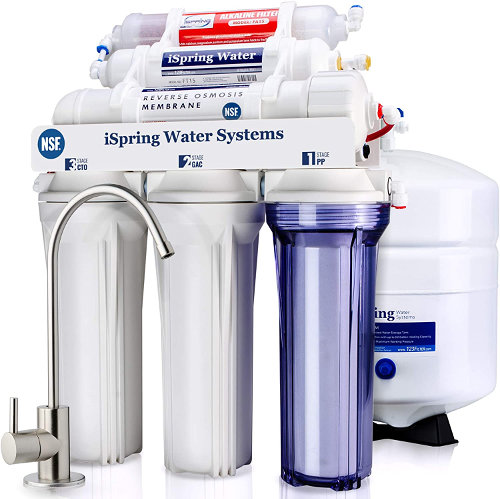
How would you go about addressing radioactive contaminated water?
[ Read: HEPA Air Filter For Alpha Particle Radiation ]
[ Read: 5 Radiation Detector Choices ]
Among the highest priorities for survival is safe drinking water.
AlexaPure Pro Gravity-Powered Water Filtration
Tested against NSF/ANSI 53, NSF/ANSI 42
